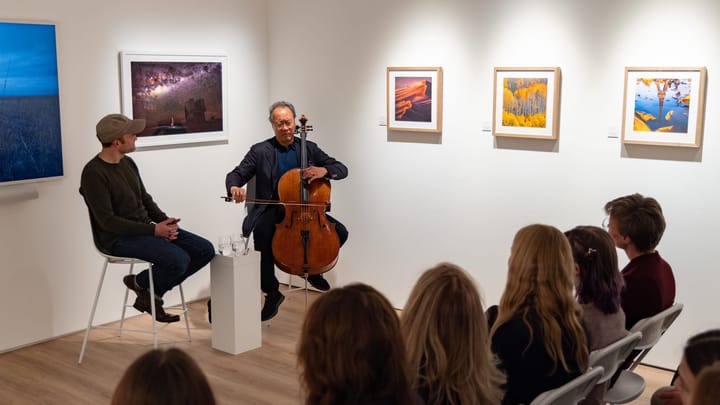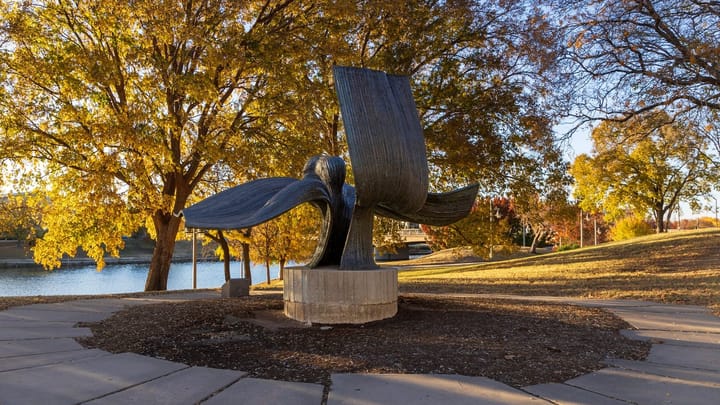'Living-Language-Land Inspired': Quilting vanishing languages at the Emporia Arts Center
On view through September 27: An exhibition by regional members of Studio Art Quilt Associates revolves around "endangered" words.
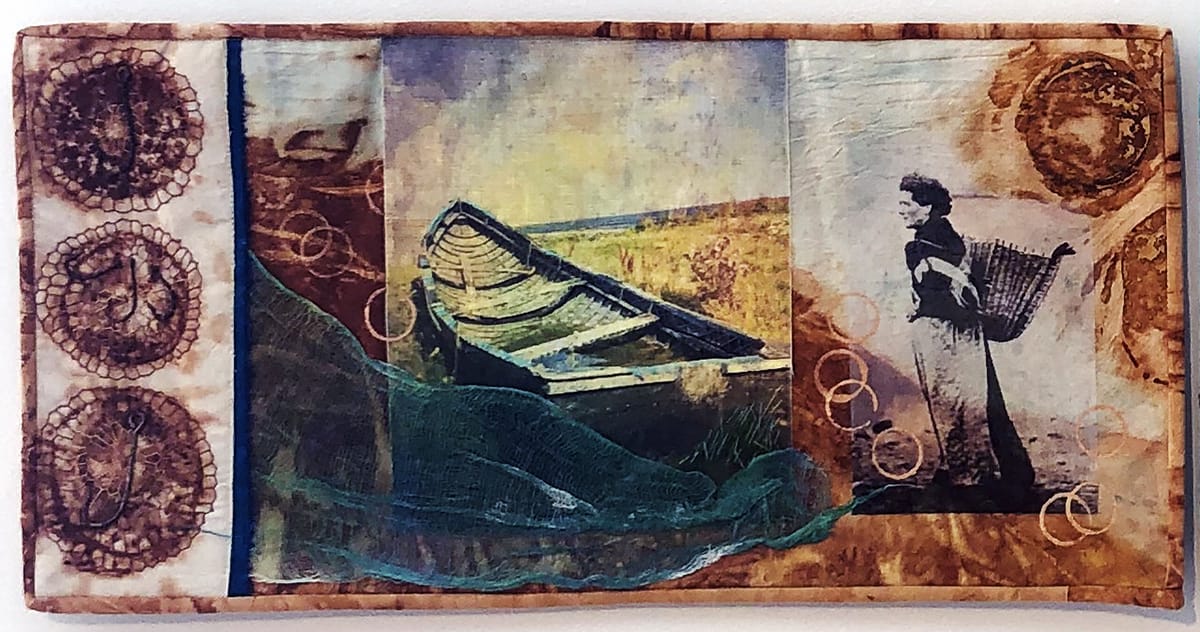
I love quilts. The small hand-stitching, the colors, and the way they predicted modernist art years (decades!) before the dudes painted us into modernism in the early 20th century. Which positions me to say that I love quilts because they are usually made by women, and I love women.
Now you know why I was so moved by “Living-Language-Land Inspired,” the new exhibition at the Emporia Arts Center, on view through September 27.
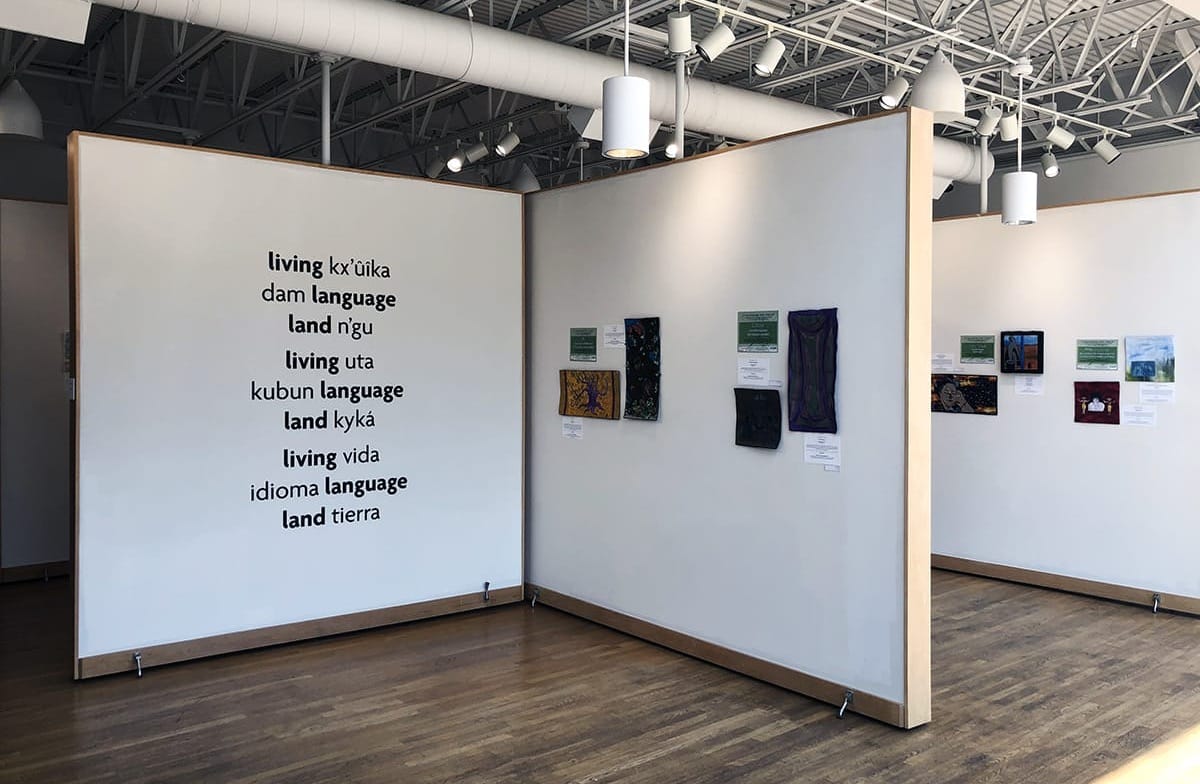
Inspired by the online Living Language Land project that works to highlight minority and endangered languages through art, this exhibition is a continuation of a global conversation. Members of the Studio Art Quilt Associates selected words from vanishing languages, learned about them, and then transformed the words into quilted expressions.
The artists from Kansas, Missouri, and Oklahoma are members of a regional chapter of Studio Art Quilt Associates, and they clearly celebrate the sculptural and painterly qualities of quilting. Their works are not quilting in its traditional sense, although this heritage is still apparent and underlies their pieces.
Like the history of quilting, at the heart of the endangered words project is storytelling: the definition of a word opens us up to a world of meaning and connection. Nita Penfold and Pat Owoc, both of St. Louis, use photographs printed on fabric to convey the words they delve into and a sense of history, even if it is mysterious. The images provide a curious depth to their more abstract uses of thread, string, color, and texture in the quilts.
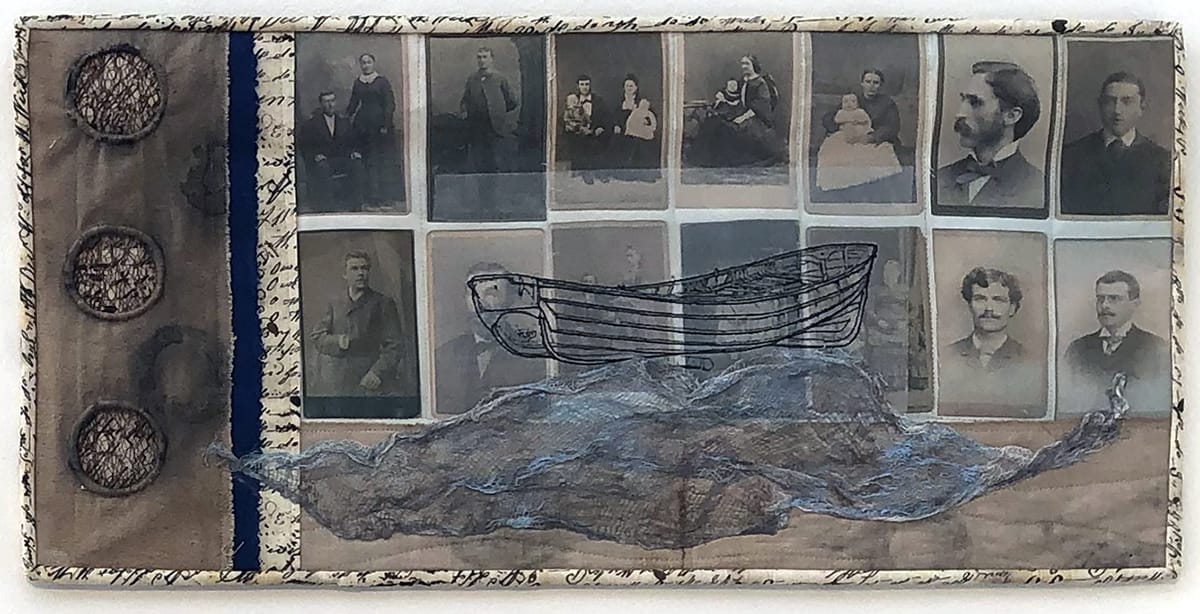

Nita Penfold’s trio of quilts, “Ancestry,” “Disappearance,” and “Disintegration,” explore the Northumbrian word coble — a traditional open fishing boat without a keel — and are collages of images and materials that evoke the fading fishing traditions of families who once made their livings at sea. “Disappearance” features a photo of a coble at the center, with circles stitched, marked, and dyed into the fabric. The image of a woman carrying a basket faces toward the middle and the rusty fishhooks that Penfold appliqued on the opposite edge echo the rusted browns and reds throughout.
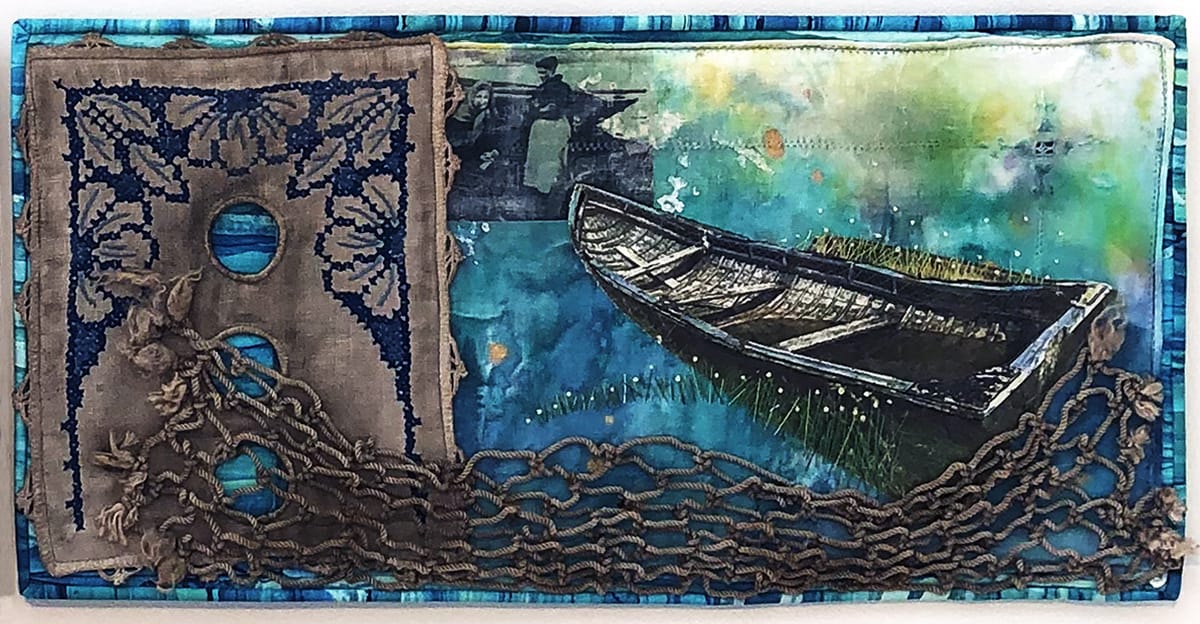
The three works address the fact that dangerous conditions and overfishing have pushed younger generations to more secure lines of work; what were once tools of the trade are now artifacts. Penfold’s use of 19th-century portraits, burnished greens and browns, fishhooks, and nets evoke the sadness of lost traditions and honor the trade without critiquing the movement of time.
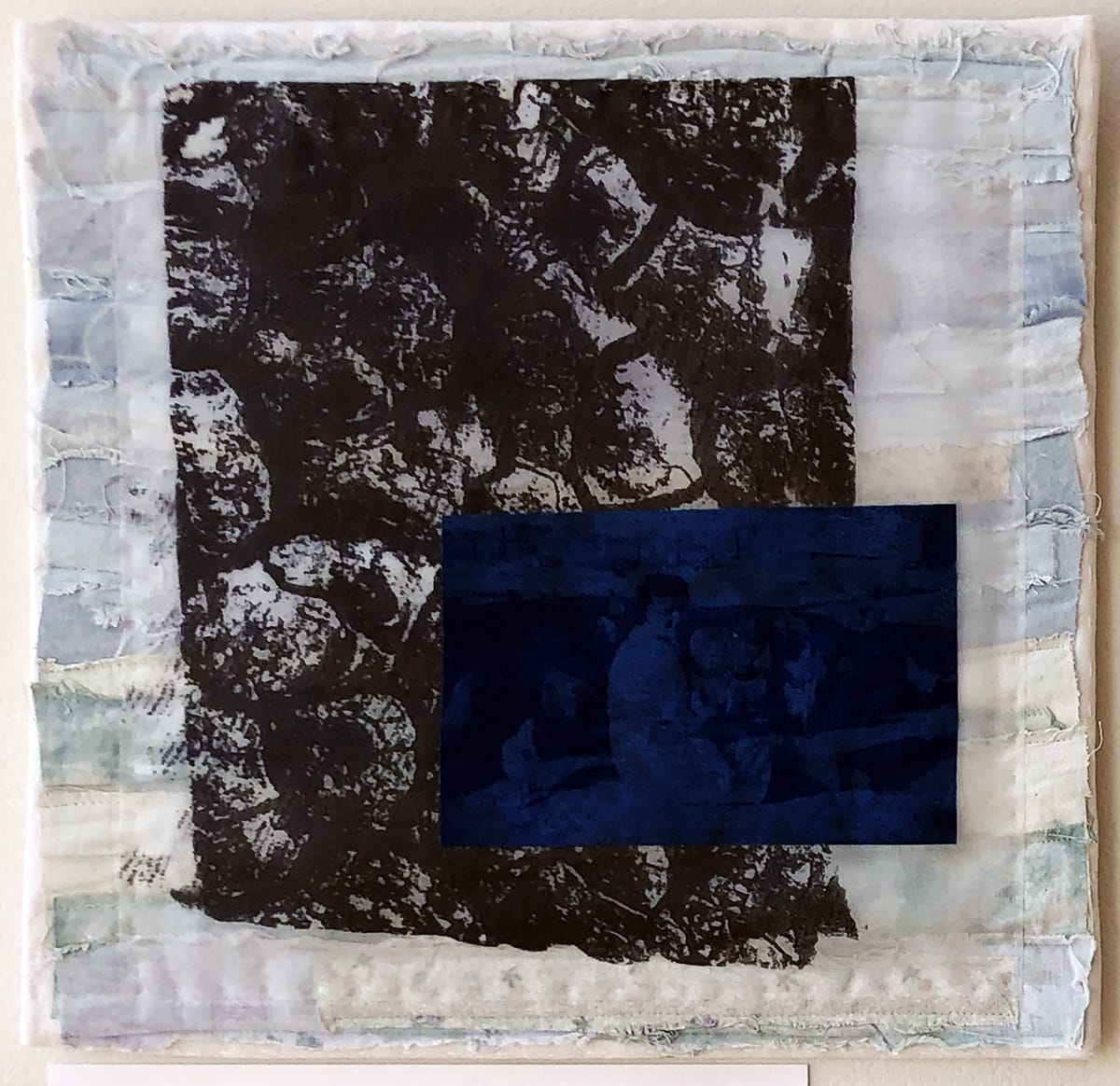
In “Wellspring, Dry Spring,” Pat Owoc utilizes a photograph to portray mature womanhood and, abstractedly, cracks in a dry pond bed. Inspired by siwa, a word from the Muysk Kubun region of Central Columbia that means a pond, lake, or woman’s vagina, the artist meditates on the ebb and flow of life in the context of land; in this case, in bodies of water. Owoc conveys water through stitched strips of light blue chiffon that give delicate movement to the piece.
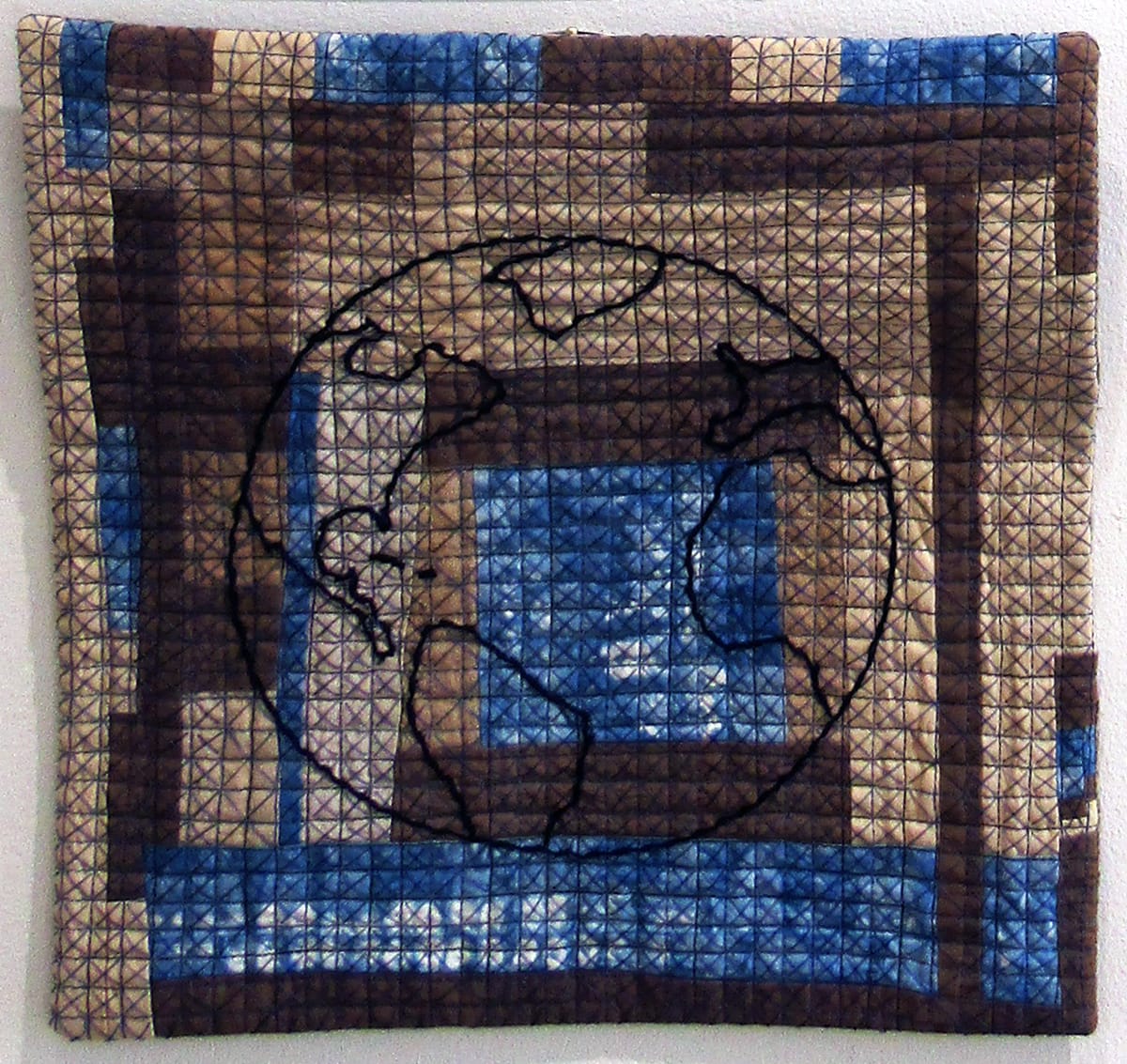
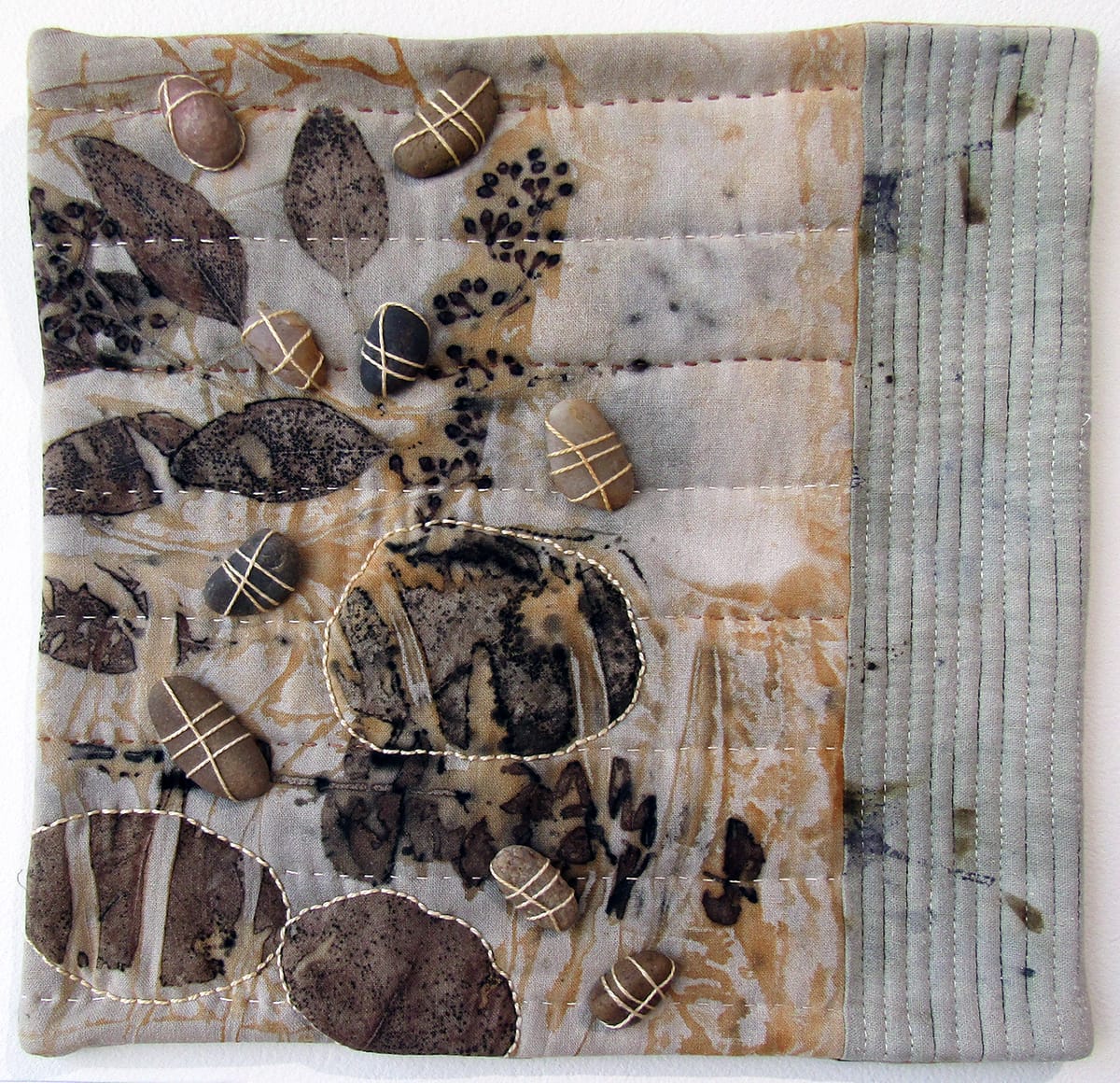
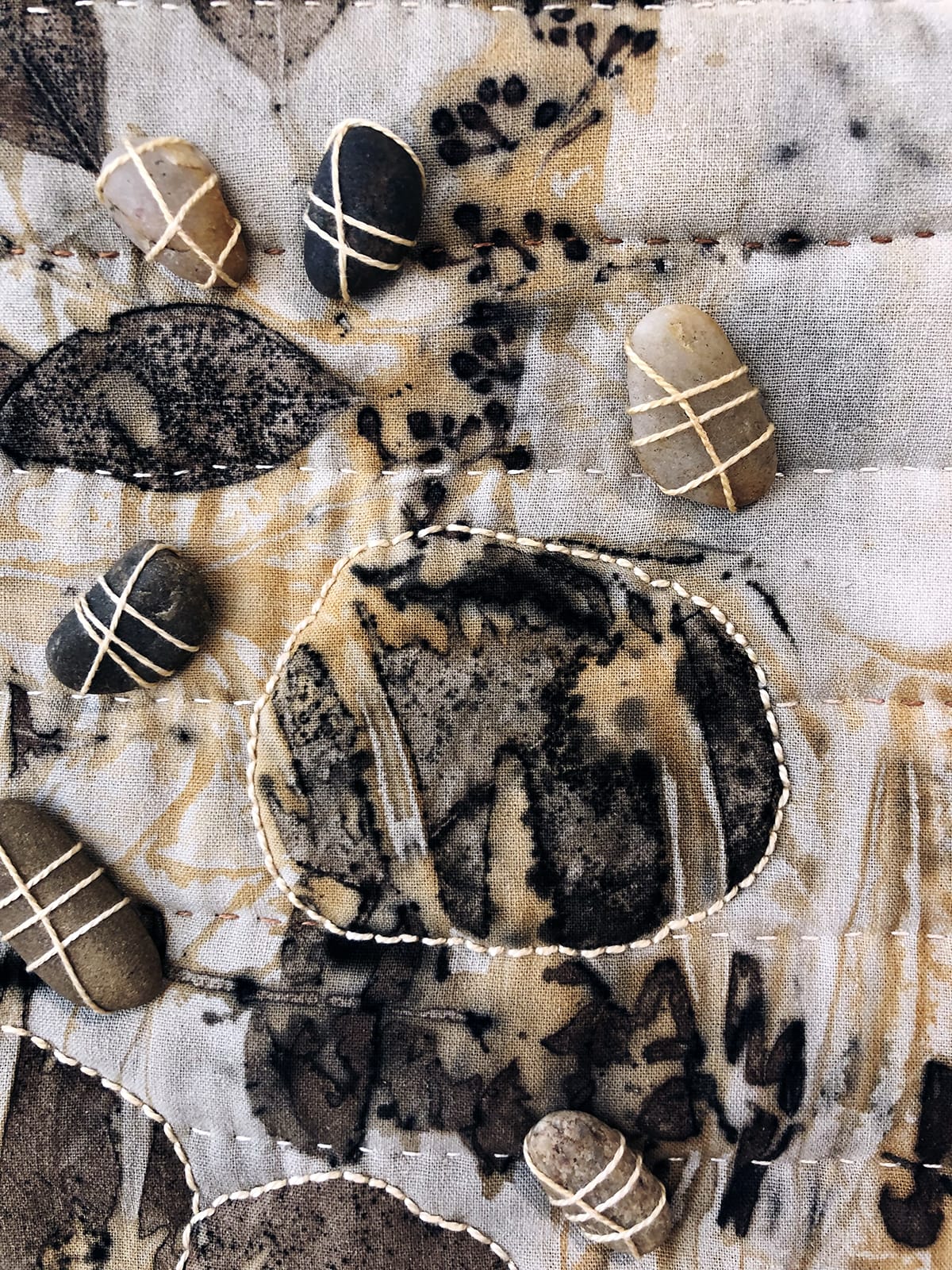
Elizabeth Richards, “Stone,” mixed media quilt. Photo by Leslie VonHolten for The SHOUT.
Elizabeth Richards of Oklahoma City and Rhonda Denney of Emporia, Kansas, were also inspired by a Muysk Kubun regional word: hyká, meaning name or stone. Richards sewed garden stones into her earth-tone quilt “Stone,” creating a dynamic, multimedia work of lines and textures. Denney looked to history and found connections with artworks from the distant past: pictographs, including ancient cave drawings. With dye and stitching, she created a pictograph-style elephant called “Stone Speak,” charming in its stylized movement and expansive in its associations across land and time.
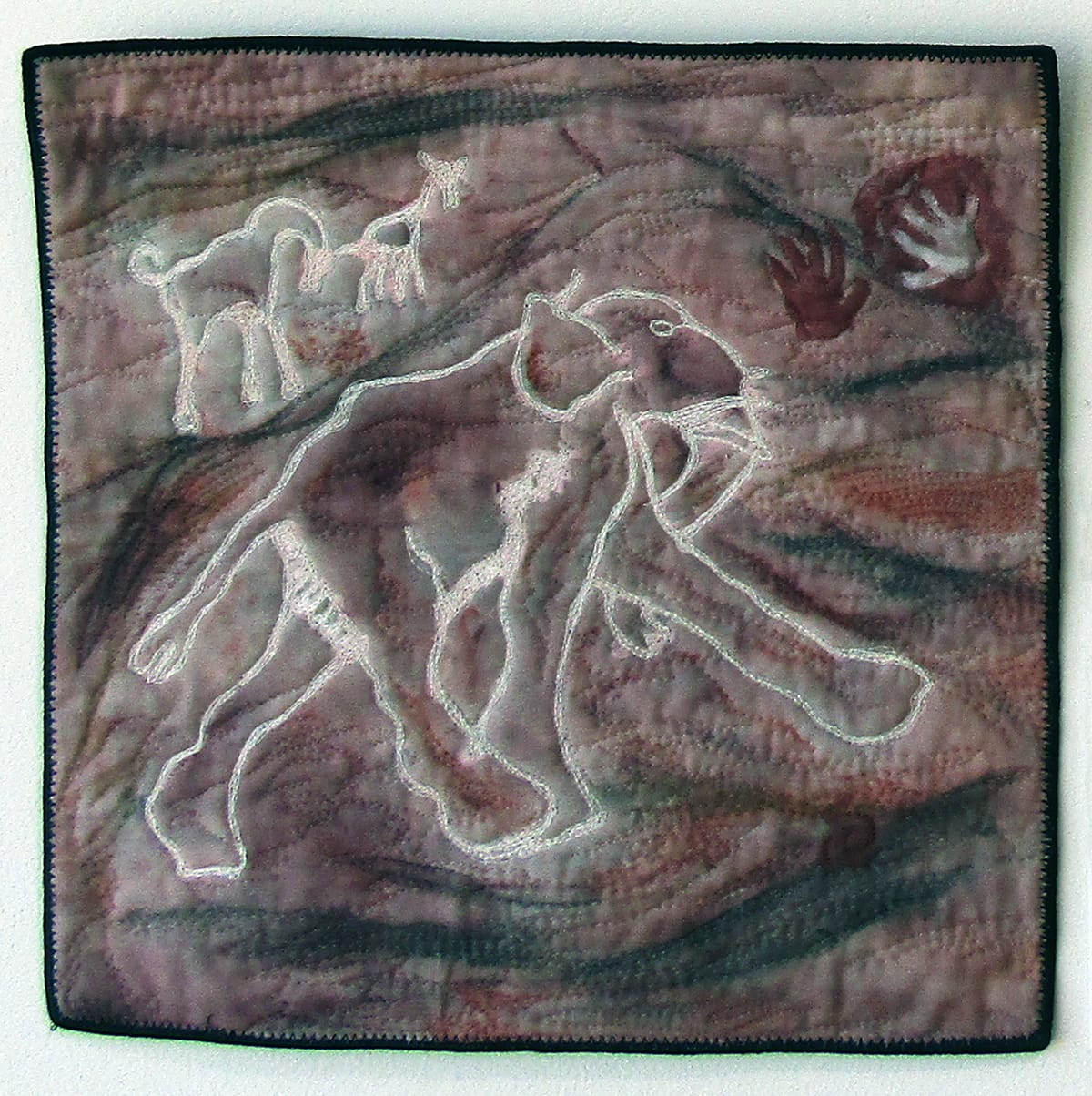
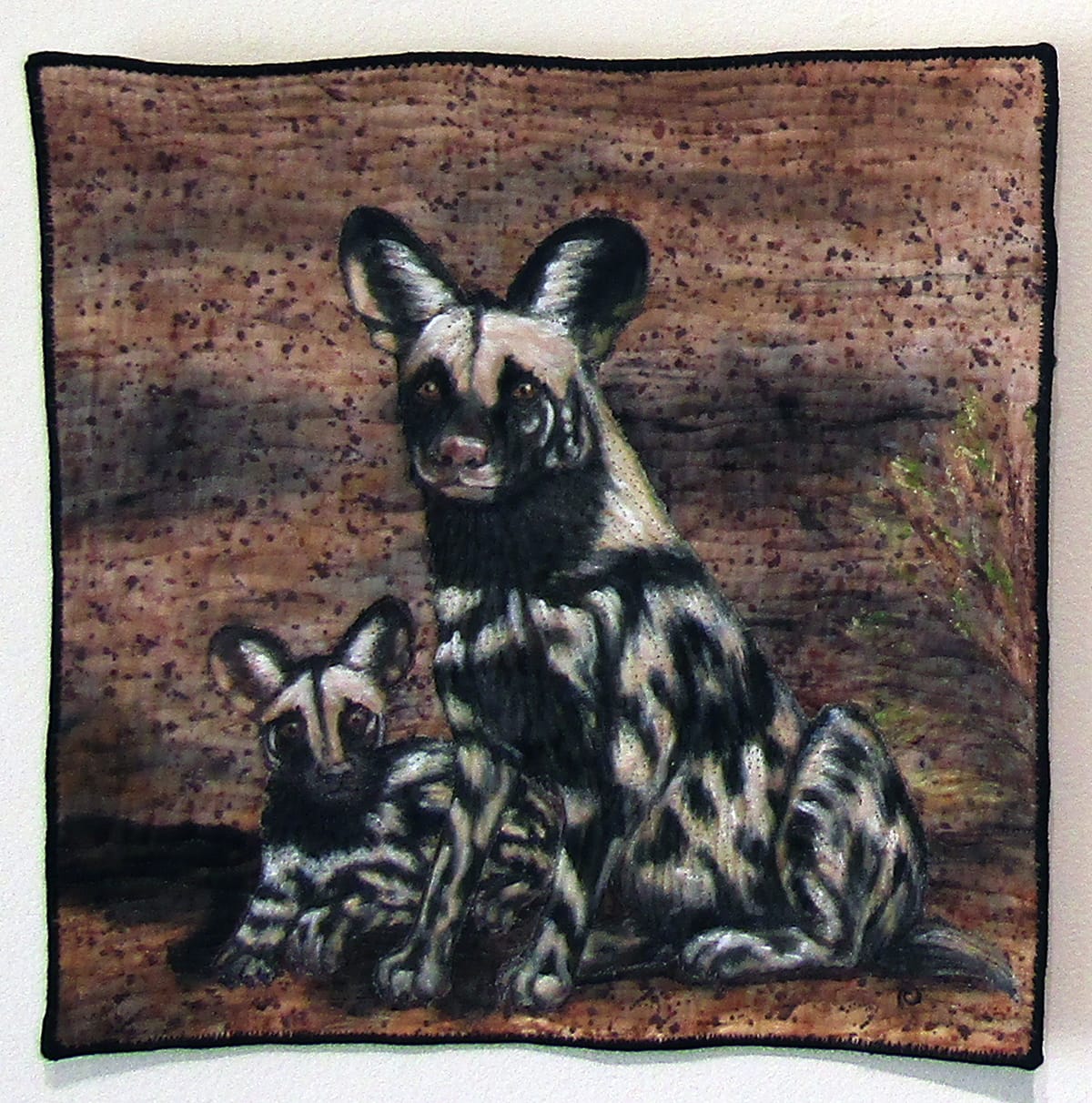
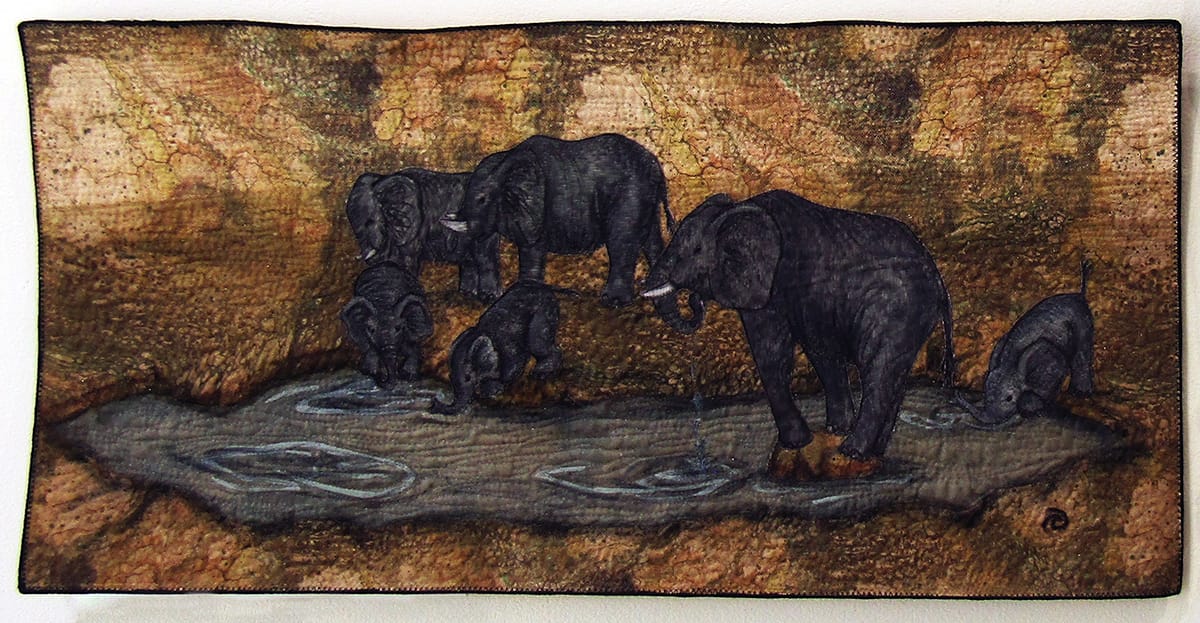
Mixed media quilts by Rhona Denney, from left: “Iconic Painted Dogs” and “The Essence of Life.” Photos by Leslie VonHolten for The SHOUT.
Some artists in the exhibition explore the sculptural boundaries of fiber. The creative practice of Shannon Conley of Moore, Oklahoma, is especially fascinating. She chose the word tuuca orodji from the Khwedam of Namibia, meaning “rainwater pan.” For her piece “North Eagle Creek,” Conley hand-dyed fabric and quilted layers together, piece on top of piece. She then cut the fabric according to the layers of a topographic map of the White Mountain Wilderness of New Mexico — an area that also experiences increasingly dry weather. The effect is a beautifully layered work of blues, grays, and greens that is technically quilted, but would likely never be called a quilt.
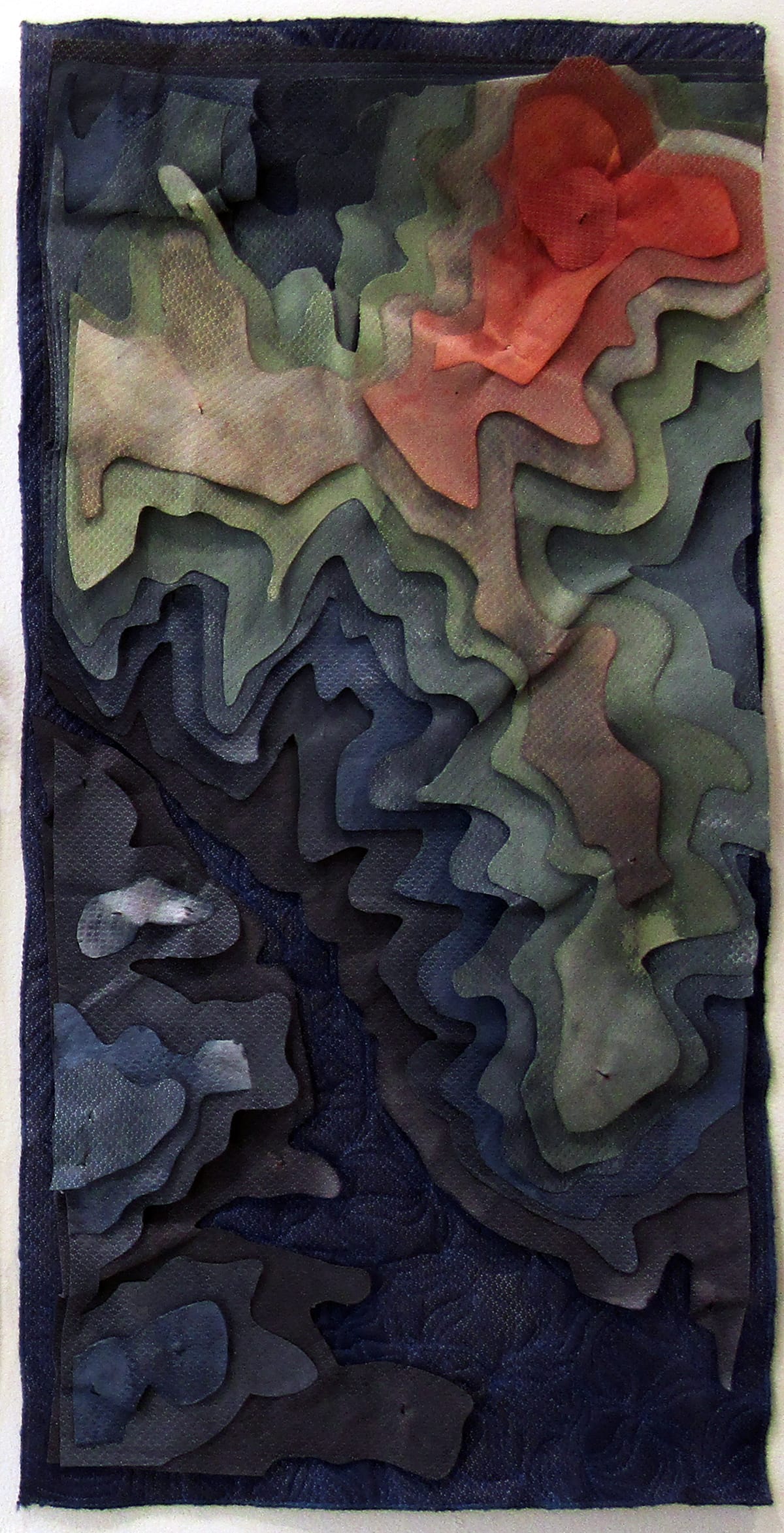
Most joyous for me is that these exciting, new manifestations of quilting hold onto the heritage of global fiber arts. Sewing is a place to express individualism as well as culture, all while meeting a basic human need. It is also a place where women communicate and connect across language barriers. By positing that visual art is a language, the artists of “Living-Language-Land Inspired” expand the interpretations of the words presented, showing us the looking-glass power of expressions and stories and giving us a tactile experience in which to consider them.
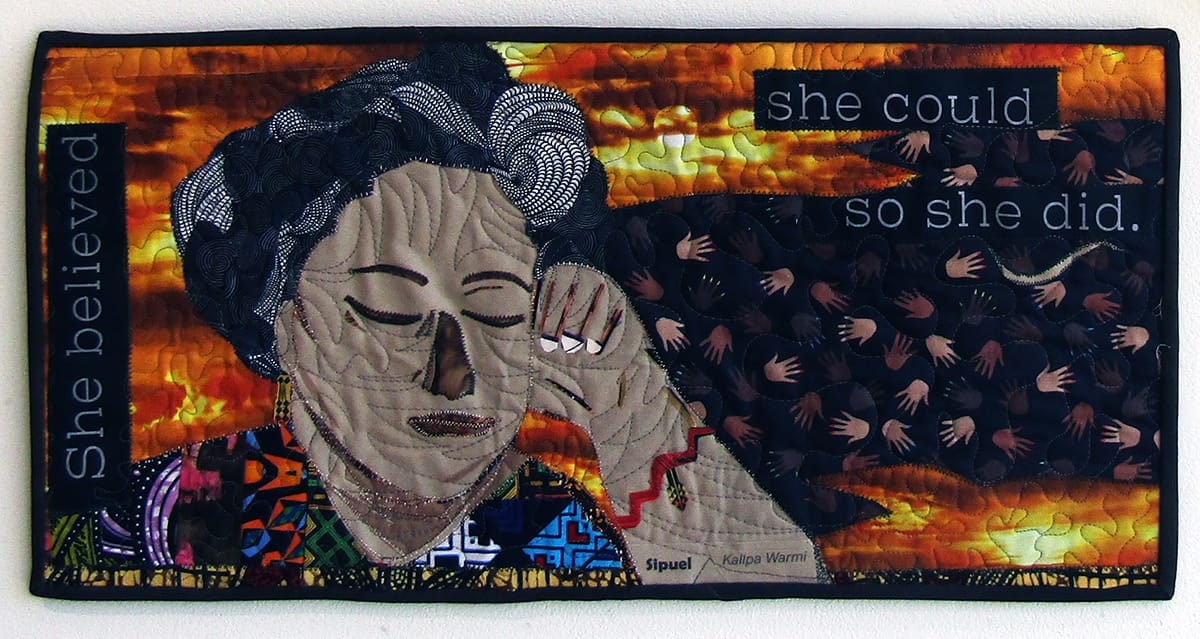
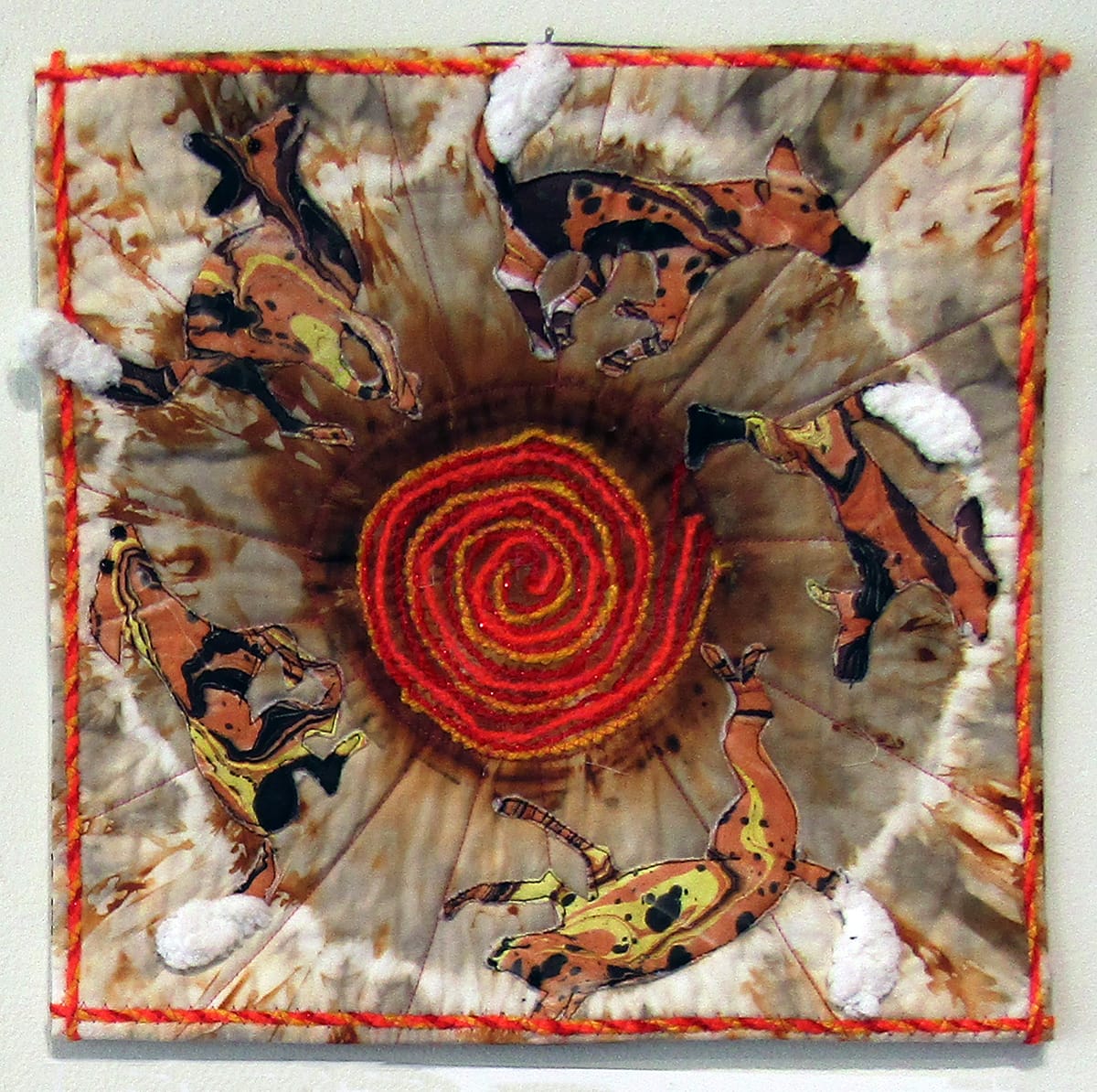

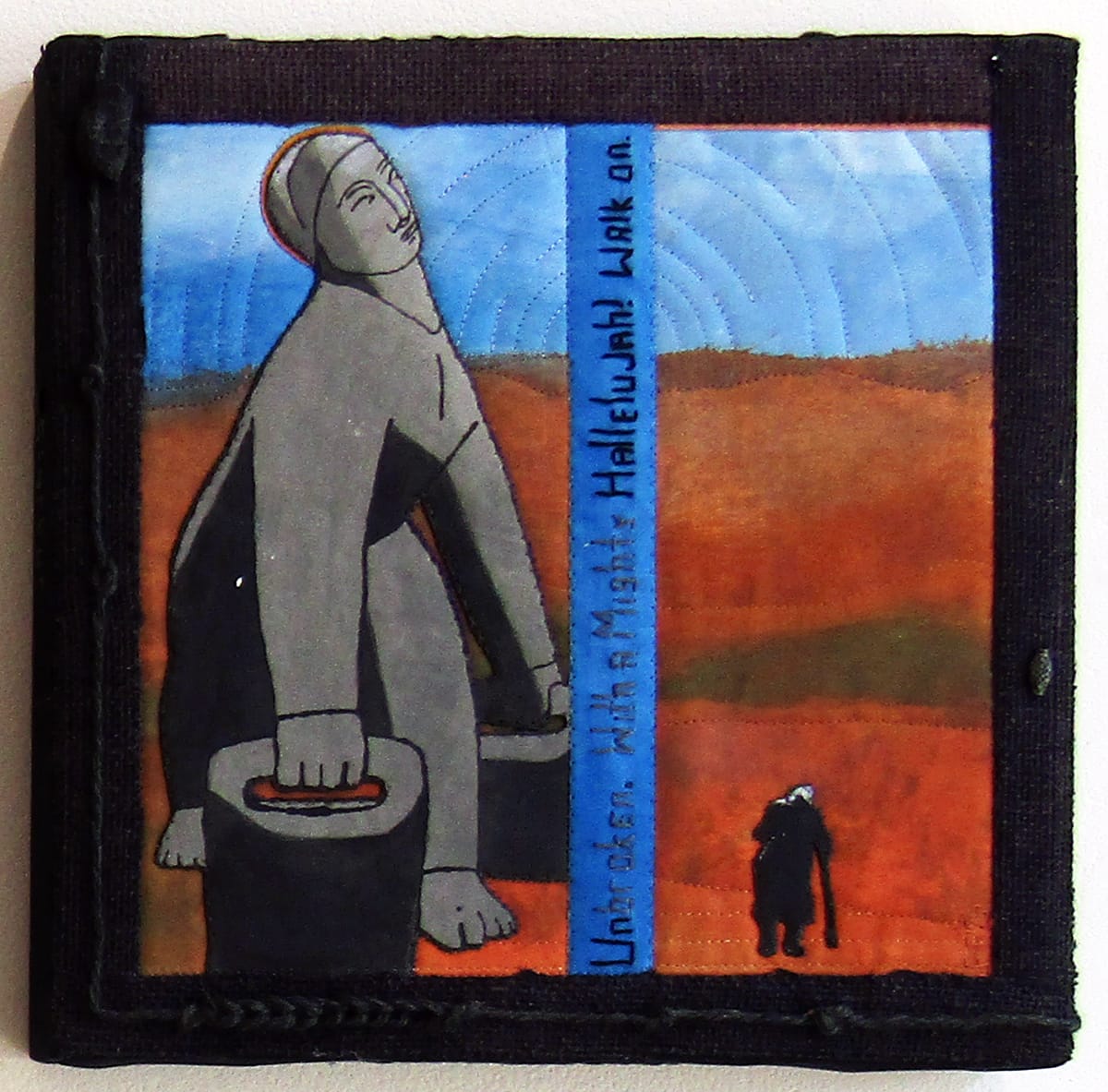
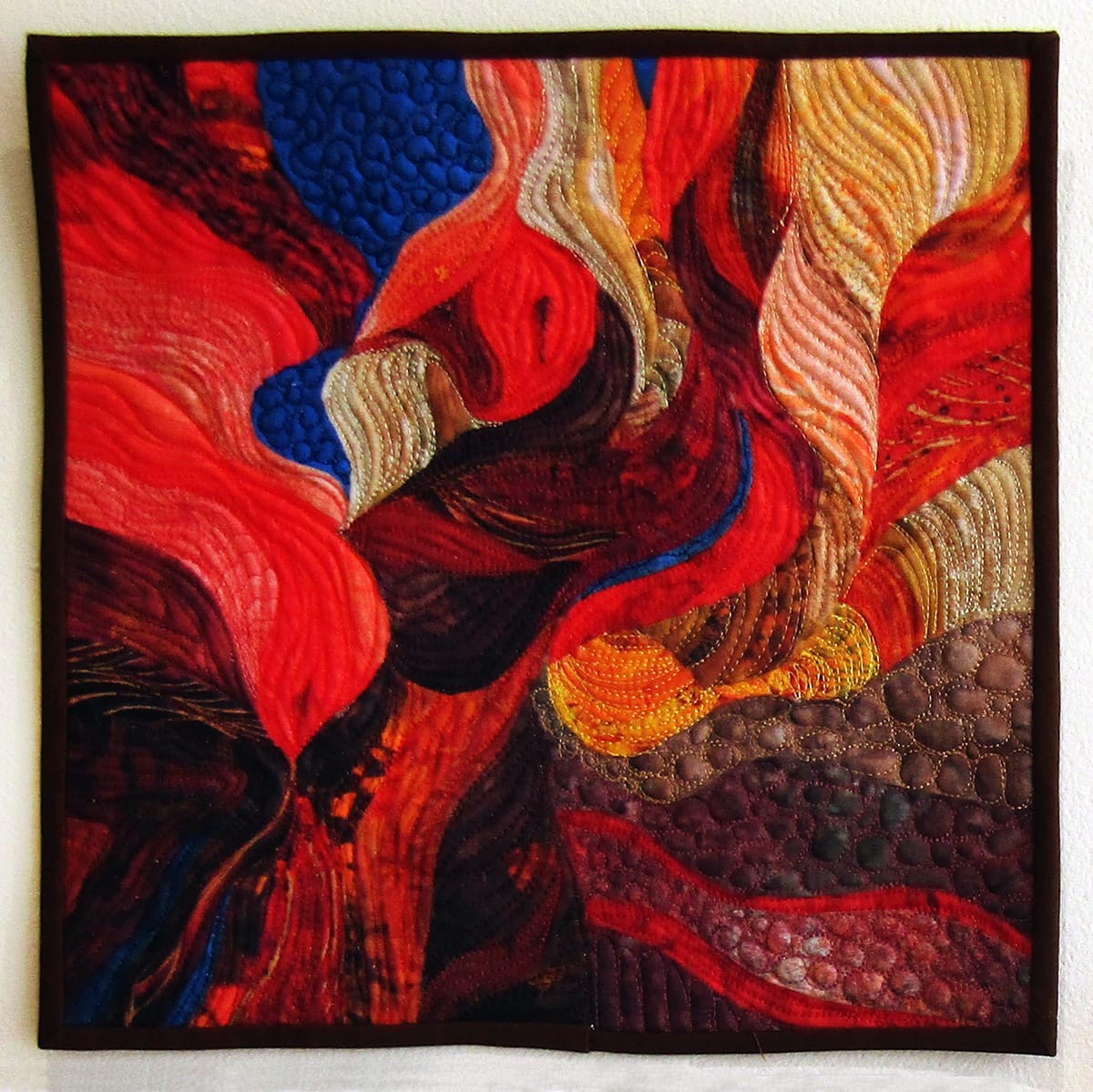
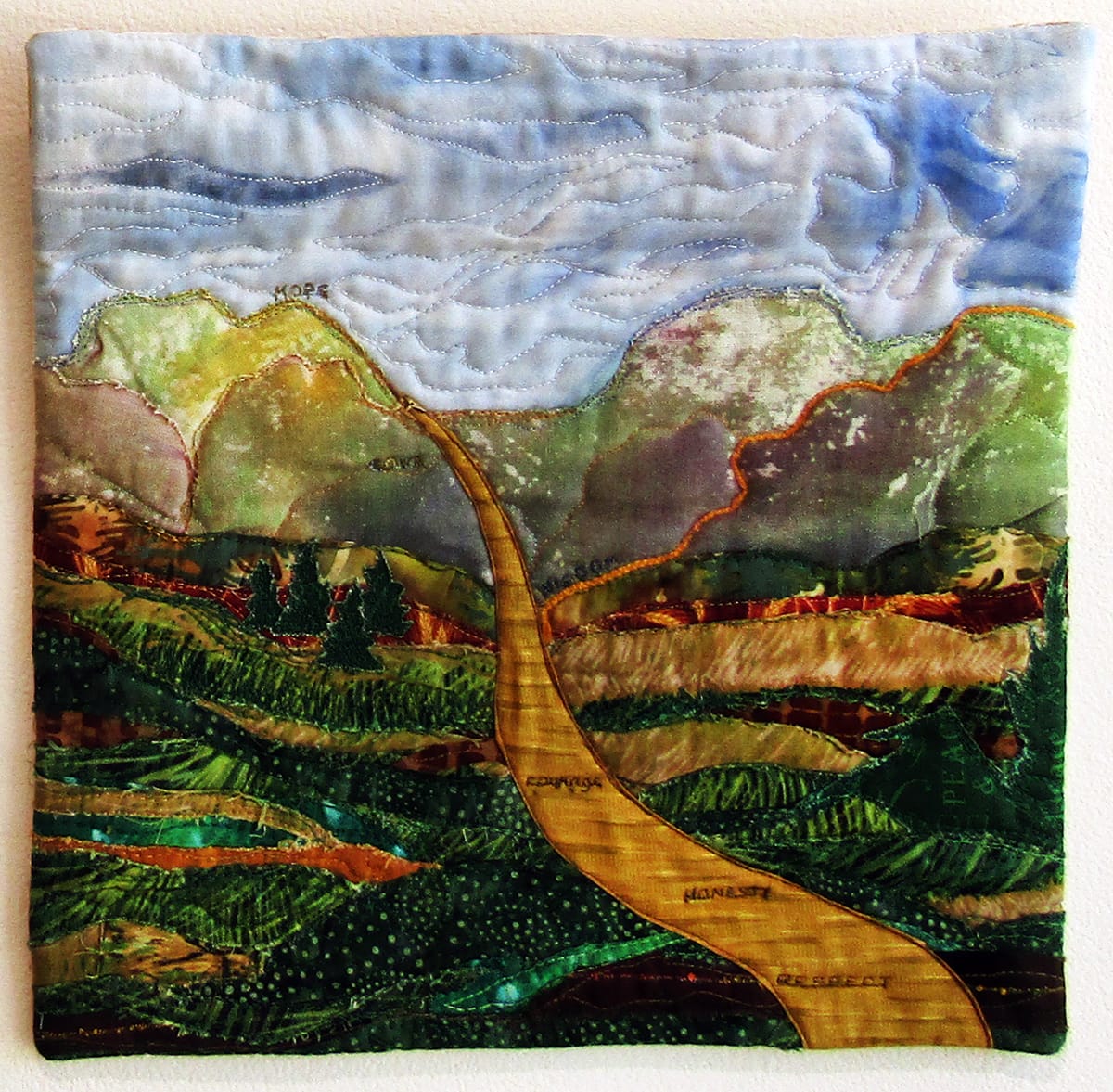
More mixed media quilts on view in "Living-Language-Land Inspired," from top left: Beverly Huggins Kirk, “Ain’t I A Woman of Strength?;” Harriett Zipfel, “IIXeba Romp;” Jean Howard, “Siwa: Pond; Lake; Woman’s Vagina;” Linda Filby Fisher, “Grace 2 A Telling;” Vicki Conley, “Slot Canyon 2B.” Photos by Leslie VonHolten for The SHOUT.
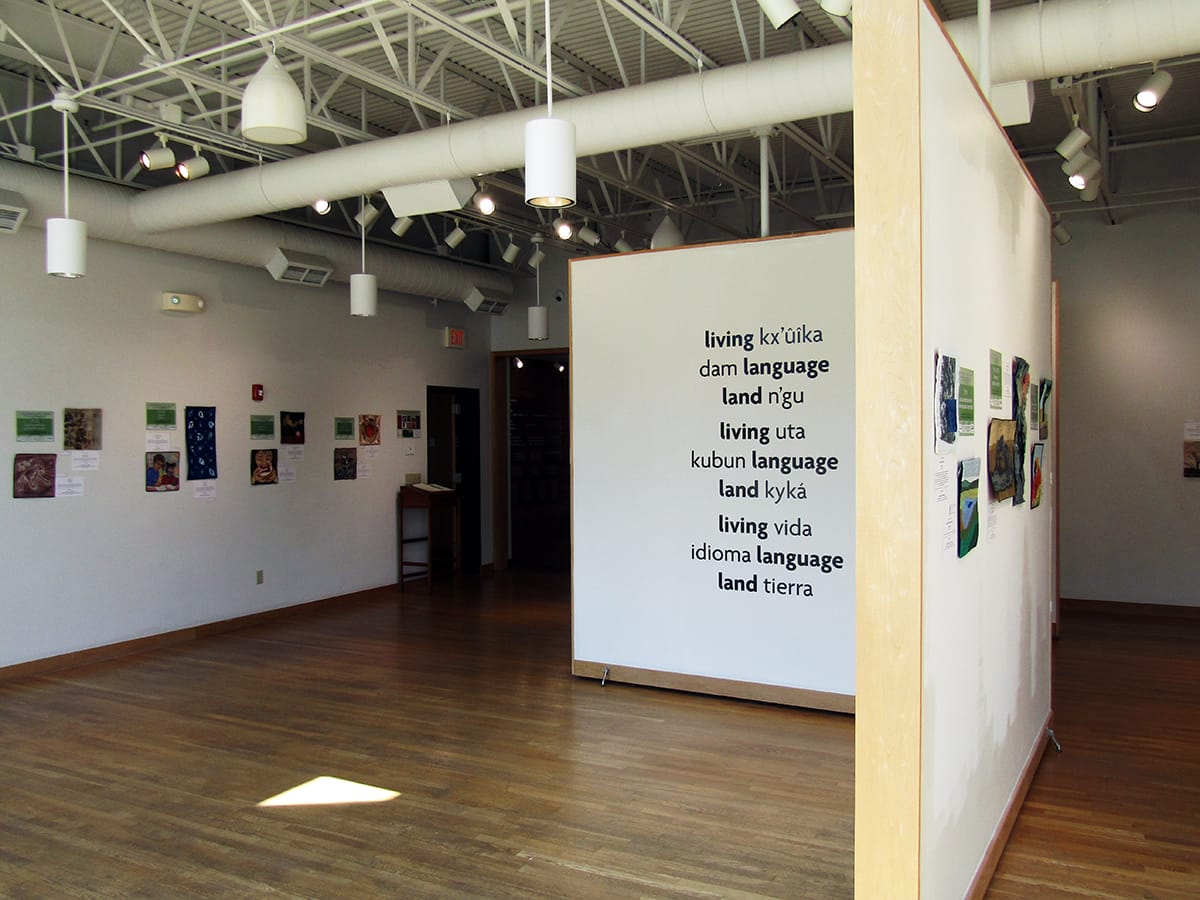
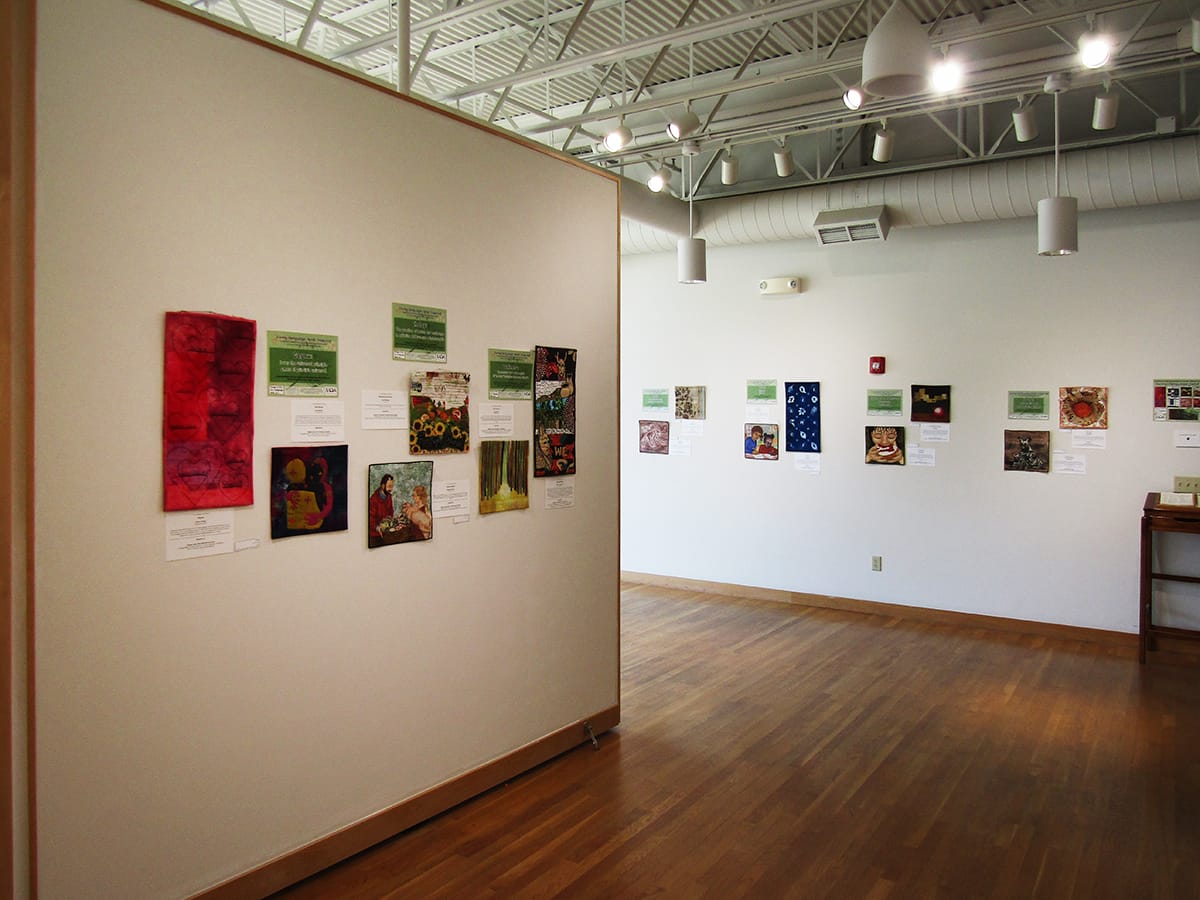
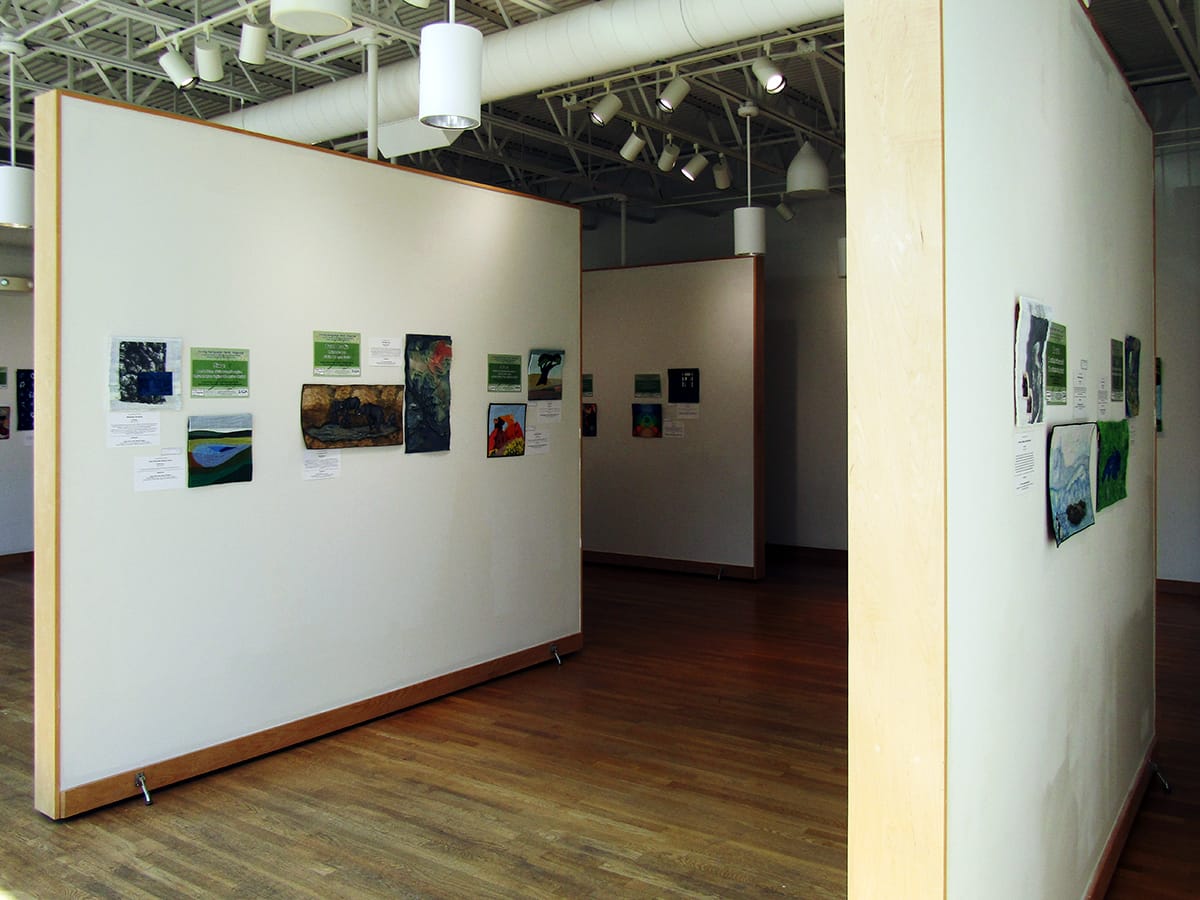
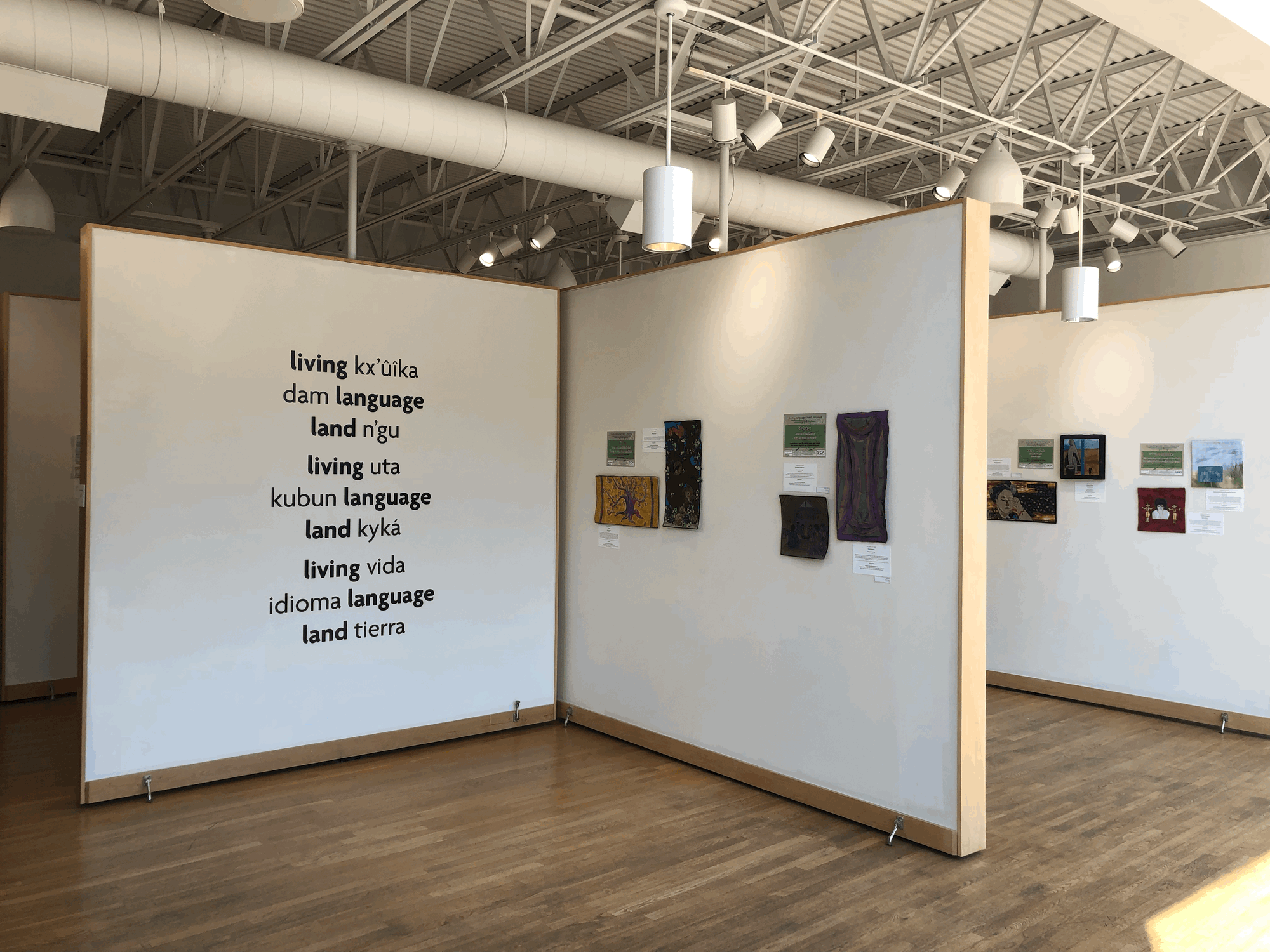
Installation views of "Living-Language-Land Inspired" at the Emporia Arts Center. Photos by Leslie VonHolten for The SHOUT.
The Details
“Living-Language-Land Inspired," a SAQA KS/MO/OK Regional Exhibition
September 5 – 27, 2025, at the Emporia Arts Center, 815 Commercial St, Emporia, KS 66801.
The Emporia Art Center's hours are 10 a.m.-6 p.m. Tuesdays through Fridays and 10 a.m.-3 p.m. Sundays. Admission is free to the public, and the facility is accessible to people with physical disabilities.
Learn more about exhibitions at the Emporia Arts Center.
Leslie VonHolten is an arts and environmental writer who lives in Lawrence, Kansas. She is co-editor, with Thomas Fox Averill, of "Kansas Matters: 21st-century Writers on the Sunflower State," which was published this month.
❋ Derby man has the kind of voice that turns heads — and chairs
❋ Socializing while sober: how some Wichitans are cultivating alcohol-free communities
❋ As a small creative business closes, the owner mourns
❋ Painting through it: Autumn Noire on 20 years of making art
❋ How a guy from Wichita resurrected 'Dawn of the Dead'
❋ Bygone Friends University museum housed curious collections
Support Kansas arts writing
The SHOUT is a Wichita-based independent newsroom focused on artists living and working in Kansas. We're partly supported by the generosity of our readers, and every dollar we receive goes directly into the pocket of a contributing writer, editor, or photographer. Click here to support our work with a tax-deductible donation.

